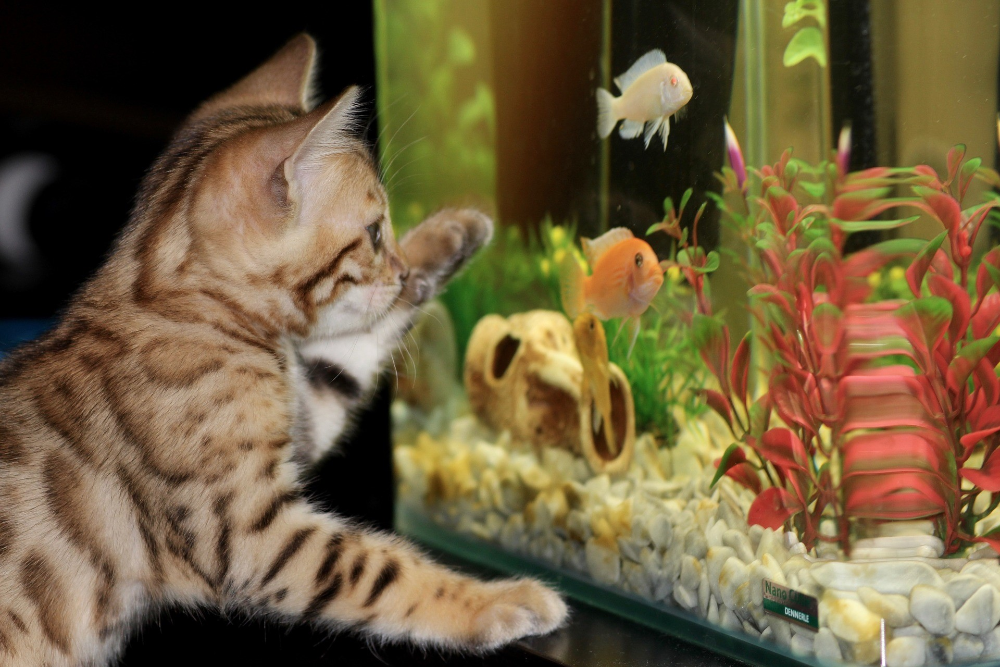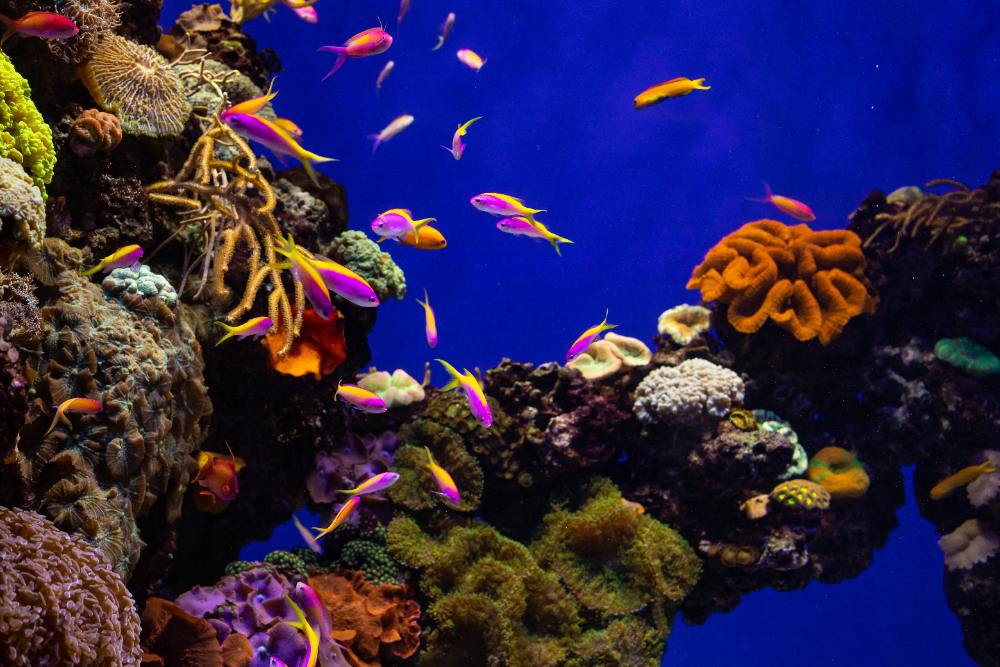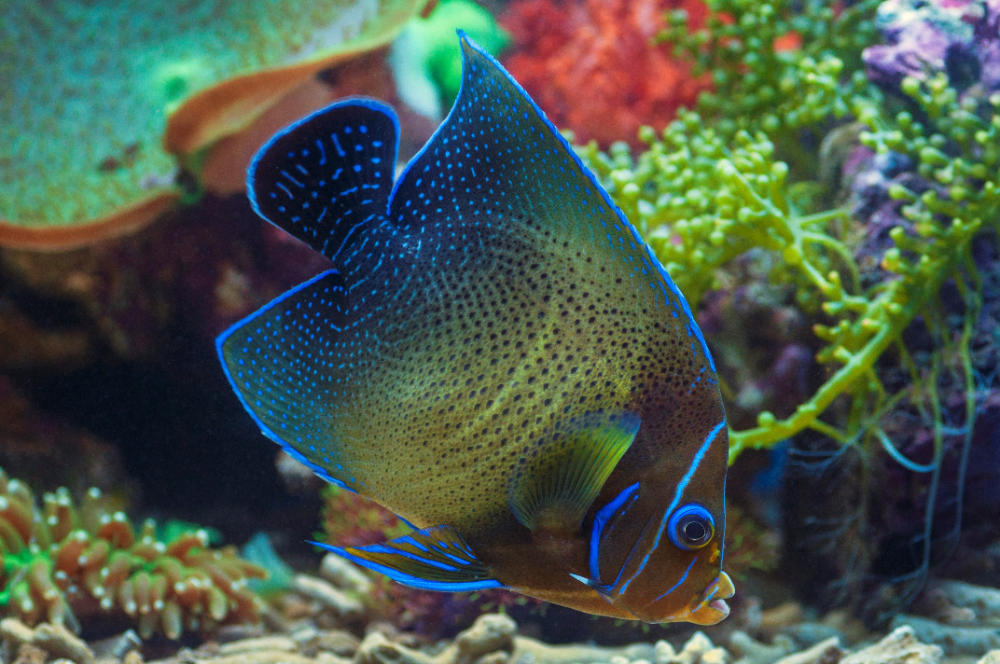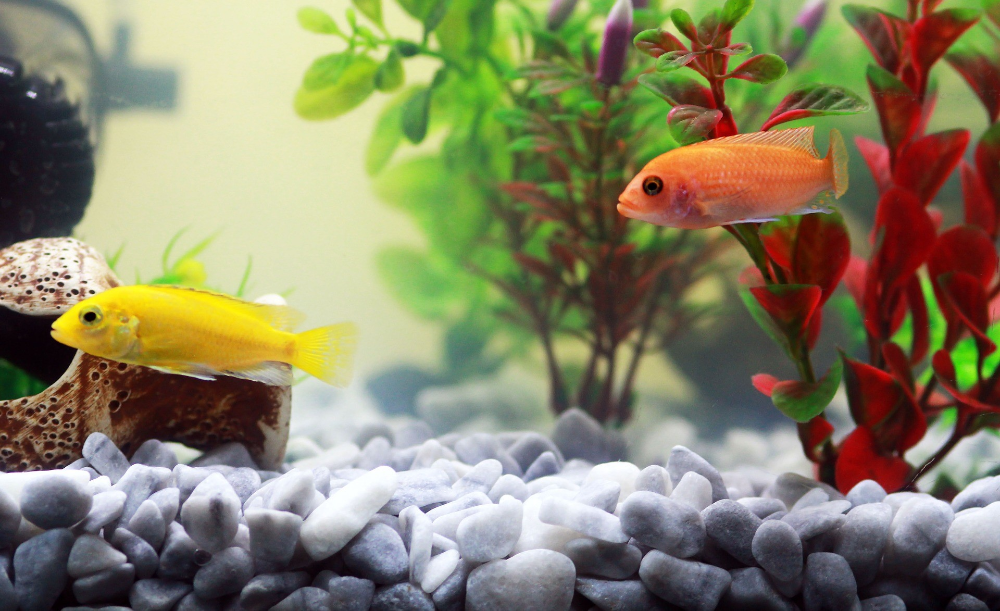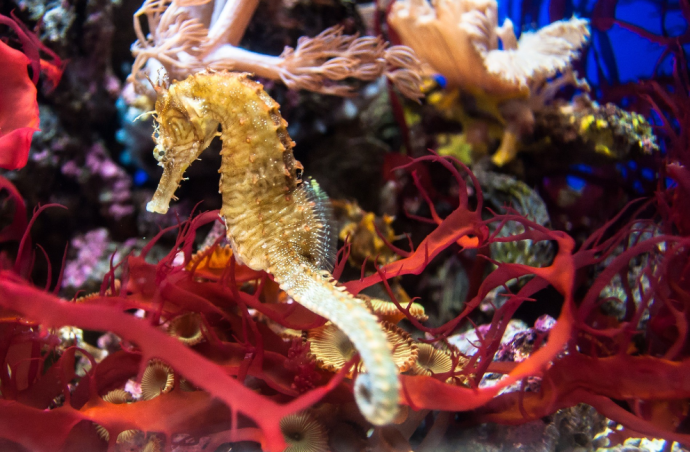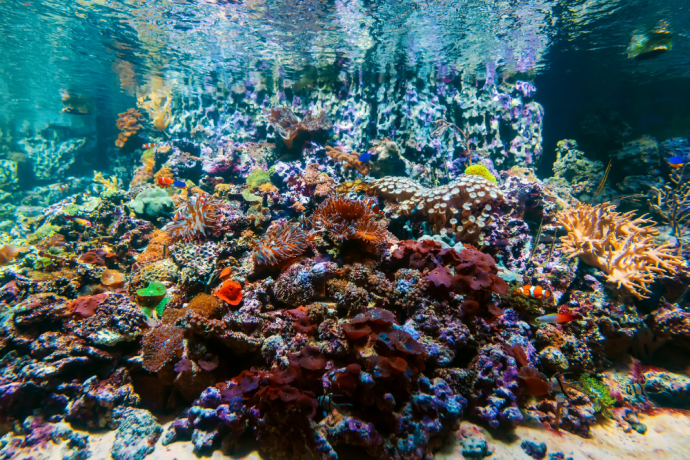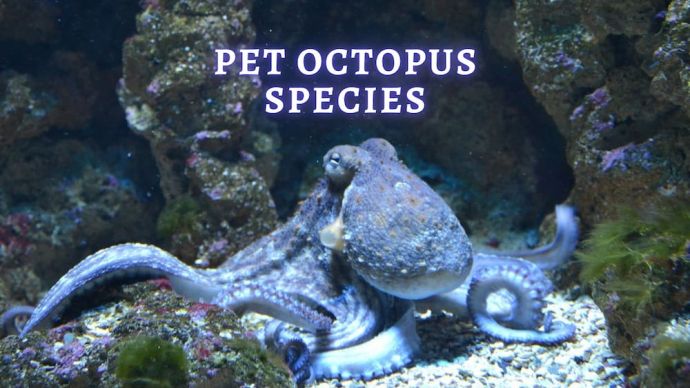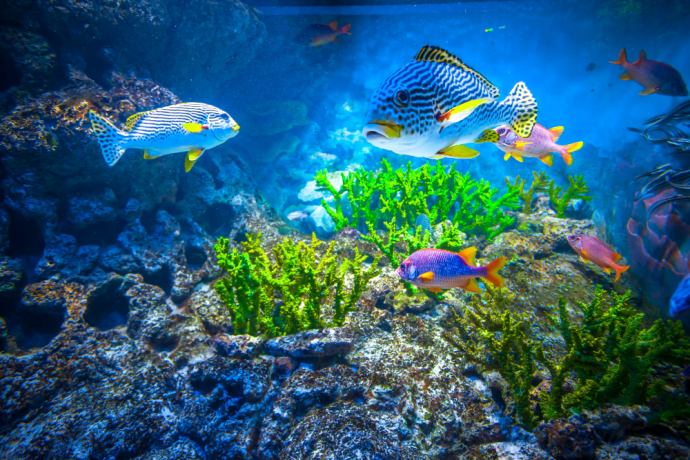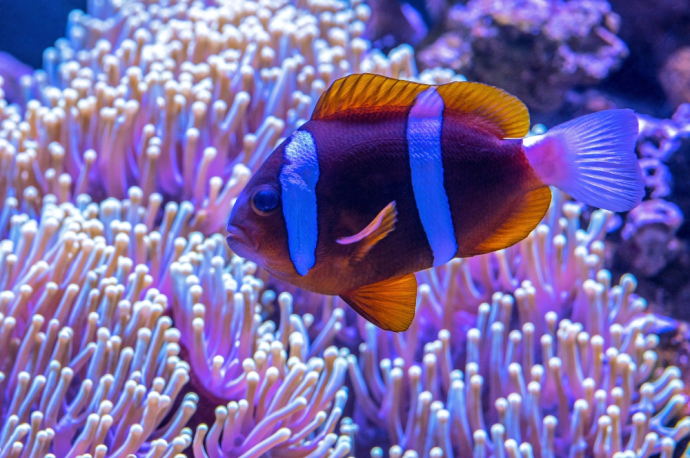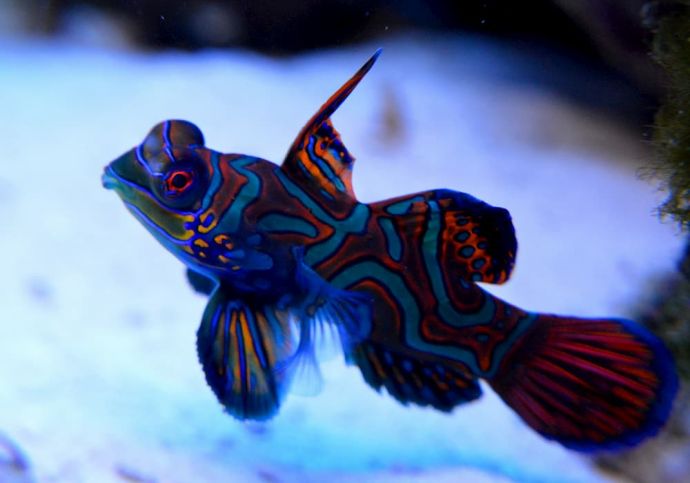What You Need for a Saltwater Aquarium
Written by:
Author: Alina Andreeva
Alina A. is a professional writer, editor, and pet-lover. She has published over 50 articles on how to care for pets properly. Alina has been writing articles for 3 years, so she has considerable experience in this niche. Her natural curiosity helps her to expand her knowledge and learn new pet care life hacks, which will make your life much easier.
View all 79 articlesLearn about our editorial process and veterinary review board.
Viewed: 829
Updated on: 03/10/2021
A saltwater aquarium is a complex ecosystem. It is characterized by its beauty and variety of species. If you decide to create such a vision at home, you should have sufficient knowledge in this area and considerable financial capabilities. You must take good care of a saltwater fish tank and keep rules of maintenance. Only in this case you can succeed and create a beautiful fish tank.
Pros & Cons
A saltwater tank is tough to create at home. Aquarists need to consider a vast number of factors that can affect not only the appearance of the fish tank but also the lives of its inhabitants. Professionals advise sorting out priorities and weighing all risks. To make this easier, you should study all the positive and negative sides of a saltwater tank.
The advantages of saltwater aquariums:
- Attractiveness
- Exotic appearance
- Diversity of inhabitants
- Less need for frequent cleaning
- Income from the sale of rare fish fry
The disadvantages of saltwater aquariums:
- The difficulty of creating and maintaining optimal environmental conditions
- The need to check the quality and composition of water using special reagents that you can buy only in specialized stores
- Proper filtration and aeration
- The need to use a specific type of soil
- The difficulty of replacing water, which you can only do by using specialized equipment
- High financial costs for creating a saltwater tank and maintaining it in perfect condition
How is it different from a freshwater aquarium?
Saltwater aquariums are very sensitive to any changes in the environment. You must strictly maintain all water parameters: acidity, salinity, temperature, hardness, alkalinity, and calcium content. Any deviations from the norm will be critical for aquarium inhabitants.
For a saltwater tank, you will need powerful equipment, individual devices, and expensive consumables. A freshwater fish tank doesn’t need all this. Maintenance techniques for a freshwater tank are not suitable for marine inhabitants.
How to choose fish for a saltwater aquarium
You should understand that the inhabitants of the seas and oceans are used to the expanse. Not every inhabitant of salt waters can live in a home aquarium even if the size of an aquarium is large.
Types of Saltwater Aquariums
Before setting up a saltwater tank, you need to determine how it will look. 5 options depend on financial capabilities, available space, and personal preferences..
Fish tank
This option is suitable for beginner aquarists. For creating it, you only need to buy the right types of fish and add them to your aquarium. A cheap way involves purchasing predatory marine inhabitants that do not require additional decorative ornaments.
Mixed tank
This type is one of the most popular. It harmoniously combines not only fish but also some species of invertebrates.
Coral tank
It is based on the breeding of corals and several fish species that are harmless to them.
Reef tank
This is the most expensive type of tank. Professionals try to recreate the reef ecosystem and bring it as close as possible to natural conditions.
Shark tank
Such a fish tank requires not only significant cash costs but also large areas.
What you need for a Saltwater Aquarium
Not every fish lover will decide to create a saltwater tank. The main reason is that many do not know how to organize or pay special attention to it. You need to purchase the following:
Aquarium
The best option is a rectangular tank of 200 – 250 liters. It will be easier to properly place stones, maintain water balance, and provide high-quality lighting. The stand under it must be stable.
Fish
Consider and make up a list of inhabitants, taking into account their number, compatibility, and needs.
Equipment
The primary condition is that it must be resistant to saltwater.
Lighting
You should equip a saltwater tank with LED lamps of 150-500 watts (depends on its volume). They give light which, almost without scattering, reaches the bottom. Some of them have a night lighting function. You can also use T5 fluorescent lamps or metal halide lamps. You must treat the latter with caution as they often explode when water gets on them.
Filtration and water regeneration
Sump ensures the cyclical nature of these processes. It is a plexiglass box with units. Sump comprises a variety of equipment: skimmer, return pump, auto water filler, etc. You can buy a ready-made sump or assemble it on your own.
READ MORE: Seahorse Tank Setup
Equipment for a saltwater aquarium and its functions
Skimmer
A skimmer is an essential element for setting up a saltwater aquarium. Marine fish produce organic waste, which subsequently decays into relatively harmless ammonium ions and dangerous ammonia. At high pH values, the proportion of vapor in tank water increases, leading to the poisoning of aquarium inhabitants. In a freshwater aquarium with an average pH, there is not much ammonia. You can rely on biological treatment due to nitrifying bacteria. In a saltwater aquarium, things are different. The pH value is higher and reaches 8.2 – 8.3, so there is much more ammonia. For this reason, it is much more efficient to remove organic waste before it disintegrates. This is when a skimmer comes to the rescue.
A skimmer is a cylindrical container filled with water. A lot of ozonized air bubbles pass through it, entraining various organic suspensions. They are subsequently removed from the tank in the form of foam into a particular foam collector. Pure water enters the new filtration system or goes back into the aquarium.
Filter
A filter can be internal or external. In a saltwater aquarium, it practically does not perform biological filtration. Algae, bacteria in the soil, and decorations cope with this. You can fill the filter with charcoal or sintepon. They absorb various suspensions. Charcoal removes toxins from the water and makes it transparent. You should replace it once a week and wash the sponge periodically.
READ MORE: Canister Filter Reviews
Refugium
This useful unit performs biological filtration. In some cases, it serves as a source of microplankton. It enriches water with oxygen and prevents the acidity level from lowering at night. It grows useful algae that absorb nitrates and carbon dioxide. You should place it near the skimmer to provide better water purification.
READ MORE: How to make a Refugium for Saltwater Aquarium
Auto water filler
Water from the aquarium continuously evaporates, and its salinity rises. You can avoid this by auto water filling, which adds water to the tank.
Aquarium fridge
You need this to prevent the overheating of water in hot weather.
The bottom line
A saltwater tank is a costly project and requires a lot of effort, but do not immediately abandon this idea. If you already have some experience with a freshwater fish tank and you have a great desire to set up a saltwater aquarium, go for it!
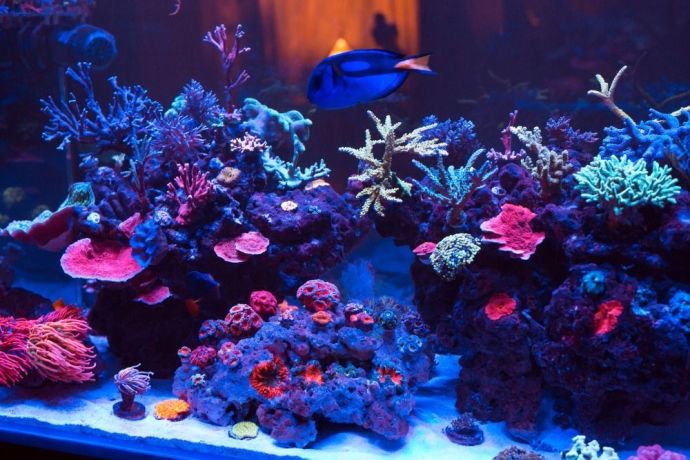 Fish Owners Tips Saltwater Refugiums: How to Make a Refugium for Saltwater Aquarium?
Fish Owners Tips Saltwater Refugiums: How to Make a Refugium for Saltwater Aquarium? - 781
- 0









